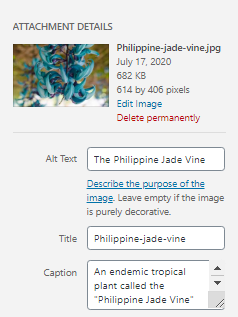When everything and everyone is going digital, learning a digital skill like SEO is an advantage. If you’re into this, then perhaps this blog can help you – a beginner’s guide on the basics of SEO.
Inputs provided here are presented in a simplified, non-intimidating and easy to understand manner to help beginners (like myself) become more comfortable on the topic of SEO. You will also find 8 easy steps in creating effective SEO-friendly content that you can easily apply in your content creation. You’ll realize that SEO is not as complex as initially thought.
For a person who has zero knowledge of search engine optimization (SEO), learning the “basics” is always a good starting point.
The Value of SEO Content
Creating SEO-friendly content is maybe more important now than ever.
Since the start of the lockdown, people are spending more time on the internet. Getting the attention of the audience, creating quality content, and crafting digital strategies are very crucial at this time.
Content like blogs or articles can be well-written, thoroughly researched and creatively conceived, but if it doesn’t speak to the intended audience and provide the value that the audience is looking for, it’s not doing its job. Of course, you want to create high-quality content and you want to be found. This is where the basics of SEO comes in handy. By integrating SEO tactics, it can help increase ranking on search engines and improve the visibility of your page. You’ll see that creating SEO-friendly content can help propel a chain of reaction for your website or page.
How I Got into SEO Content Writing: Tourism + SEO
I used to mainly work in the tourism industry. Tourism is my forte. This is what I studied in school and this is my profession. Prior to this year, I had zero knowledge of SEO. I was only introduced to this term back in August 2019 but it was only in the second quarter of 2020 that I had a good grasp of it.
COVID-19 is a real game-changer. Coming from an industry that revolves around bringing people across the globe, this pandemic is truly painful. It put a temporary halt to tourism worldwide. As a result, many in the tourism industry suffered displacement of jobs, including myself. I had to adapt, look beyond what is and acquire new skills to survive and stay current in today’s ever-changing world.
The pandemic allowed me the opportunity to unlock new potentials. I would have never predicted that I will become a full-time Content Writer during a global pandemic. I am grateful to be part of not only a leading sustainable tour company in the Philippines but a leader in global digital marketing as well, that is, Kapwa Travel.

While waiting for tourism to return, our company has taken a proactive stance in digital marketing, SEO efforts and in strengthening our online presence. We regularly publish timely, informative and forward-looking blogs on our website and share it in our social media accounts. We want to assure the traveling public that we will be there when the travel season resumes. And when that happens, we will be on top of their mind – the company who never wavered in giving them reliable and uplifting contents amidst a global pandemic.

What is Search Engine Optimization (SEO)?
SEO stands for “search engine optimization.” In simple terms, “SEO means the process of improving your site to increase its visibility for relevant searches. The better visibility your pages have in search results, the more likely you are to garner attention and attract prospective and existing customers to your business.” | Source: searchengineland.com
Video on “What is SEO and How Does it Work?” by Ahrefs
SEO and Inbound Marketing
SEO is closely linked with inbound marketing. While SEO aims to increase the visibility of your site, inbound marketing aims to invite customers to come to you instead of aggressively selling a product or service to them.
Creating SEO-friendly content helps expose your brand and your values to prospective customers – they will know who you are, your expertise, what you can do for them and helps develop their confidence and trust in you. It is best to create the “right content” which can be seen by the “right audience”.
You see, SEO has the power to effectively market your brand. By applying the basics of SEO, you’ll have better chances of creating endless opportunities to raise awareness about your brand.
Google Search Engine Optimization (SEO)
The majority of people use Google to search for something they want to know. That’s why getting a high-ranking page in Google search results can help increase visibility and traffic to your webpage and website.

Creating the best or longest content is not suffice to rank high in Google. While quality content is a key element, there are other more “search ranking factors” that Google uses to determine the ranking of a page.
Factors such as page speed, site architecture, link structure, site authority, HTML Codes, etc. are also important elements that add up to the overall value of a website. These and other factors influence your ranking in Google.
For the purpose of discussing only the basics, I will not dwell on the more technical aspects of SEO and cover only the basics of creating SEO-friendly content.
Basics of SEO: The Art and Science of SEO Content Writing
Anyone can be a content creator. But, to be an “effective” content creator, a good foundation is important and this foundation includes the basics of writing and the basics of SEO.
Content writers specialize in written content. They use words to creatively express their ideas. Thus, good vocabulary, a solid command of grammar and style, excellent research skills, versatility and the creative ability to generate content ideas on their own are important characteristics of a content writer. The content they make can range from blog posts and web pages to social media posting, press releases, whitepapers and even video scripts. | Source: Scripted.com
SEO is an art that requires creativity and it is also a science because it requires a systematic way of doing things.
It is also helpful to ponder on why do you want to write? The answer to this question determines your purpose in writing. Understanding your purpose is key to creating high-quality work. When you know your purpose, it is easier to identify the topics you want to write and the topics you can easily turn down. By knowing your purpose, you can allocate the wisest possible use of your time and energy on things that really matter.
In my case, my purpose for content writing is clear – I write to share my love for the Philippines and inspire more people to go places, appreciate all the good in this world and be happy. 🙂
Basics of SEO Blog: 8 Simple Steps for SEO Content Writing
Here are the 8 basic steps that you can apply if you want to produce SEO-friendly content:
1) Keyword research
Begin with keyword research. Get to know what your audience is thinking and what they are looking for.
Using a digital tool like Google Ads can help you find out the exact keywords people use in Google search. Pick up on this search trend and make sure that what you create is of interest to them. Creating timely and relevant content that directly relates to your audience can attract more traffic to your site.
This first step actually simplifies your work – instead of spending a huge amount of time thinking about what to write, keyword research can give you all the right information.
2) Structure the content based on the results of the keyword research
Choose keywords wisely and make sure to use the exact keywords that your audience use on the search engine. Keyword research can help you shape the content.
List down all the high ranking keywords and use them as a guide in creating the structure of your content – identify the main topic and subtopics. Creating a structure is like creating an outline or a table of contents.
It is also helpful to use writing apps like Google Docs or Microsoft Word for writing your draft. Once you are satisfied with the draft, then you can move on and copy the finished product to your website platform. This way, it will be less time-consuming.
3) Define the Meta Title and headings (H1, H2, H3, etc.)
In SEO, it is very important to identify the “focus or targeted keyword” – identify the keyword for which you want to rank.
Keyword allocation does the magic in SEO. Make sure to consistently use the focus keyword in your meta title, meta description, subtopics, on your introductory paragraph and all throughout the content.
The text that appears on the search engine results page (SERP) is called the meta title. Your meta title must not be too short nor too long, ideally no more than 60 characters including spaces and punctuations. Make sure to frame it highlighting your focus keyword.
H1 indicates the main heading of your blog or article which appears on top of the page. Every page only needs one H1. You can be creative in writing H1 and it can be longer than 60 characters. Meta title needs to be named separately from the H1 but both containing the focus keyword.
Other support keywords can be used for H2, H3… subheading. This is to cover equally important topics that are related to your focus keyword.
4) Content creation
Now that the structure is done, you can now enrich the content of your blog. According to Hubspot, longer blog posts tend to perform the best. The ideal blog post length should be 2,100-2,400 words and the minimum is at least 300 words.
There are two ways to create authentic and high-quality content:
a) Free-flowing Content Writing
In my case, I start by writing down everything that comes out of my mind about the topic. No pressure – it can be a word, a phrase, a sentence, a paragraph, a photo or anything that pops up. It is always a great starter and can spark more ideas as you go along. Putting in your own views also adds authenticity and personality to your content.
It is easy to get lost in the pool of information available on the internet and it is important to remain centered on the topic you are writing about.
b) Research and always cite your sources
Create meaningful and trustworthy content by inserting factual informationn from reliable sources. This is where your analytical and research skills come in.
Use facts and figures to strengthen your discussion. Pick up relevant news, theories, concepts, blogs, articles, etc. that are related to your topic. And don’t forget to always cite your sources – link back and credit the original author. Providing links to the source can also help strengthen your page especially if they are also willed to give a backlink.
5) Add images and/or video to improve visual content

Google favors pages that include relevant images and/or videos. Here are some tips to help you create the right visual content:
- The file names of your image and/or video must be as concise and descriptive as possible. This helps search engines interpret their relevance to your content and rank them individually in Google Images.
- Always add a caption. If you downloaded the material from a third-party site like Shutterstock, Unsplash, Pixabay, Flickr and the like, include them in the caption portion.
- Optimize file sizes. The larger your files are, the longer they’ll take to load and page speed is also another SEO ranking factor that must be considered.
- One of the most important steps for optimising images for search engines is providing alt text for images. Note: your alt text shows when users hover their mouse over an image. Screen readers “read” your alt text for users and your alt text shows when there are problems with rendering your image in the browser like slow connection.
More tips are discussed in detail on this link.
6) Add quality links
Link-building is a powerful tactic in SEO. Simply put, the more credible links you have, the more authority you get.
Not sure what this means? Here’s a simple explanation from Hubspot: “when other websites link to your website, search algorithms determine that you have “authority” in your industry because other brands are referring to you.
Although, all links are not created equal. If you were to get an inbound link from a domain with lots of its own inbound links, like the New York Times, for example, you would get more authority transferred to your domain, than if you got a link from a friend’s blog. Your goal should be to get links from high authority domains. The higher your authority gets, the better your search rankings could be.
Additionally, linking to other posts within your site can also help to boost your authority as it’s a sign to algorithms that you’ve thoroughly covered a topic you’re discussing.
7) Create a meta description
A meta description is a brief text that appears below the blue link in a search engine result.

Creating a brief, catch and descriptive meta description is important. Make sure to use the focus keyword here too.
Your meta description must provide a good overview of the content and invite curiosity to encourage people to click through your page.
According to Hubspot, the ideal length of your meta descriptions is, no more than 160 characters, including spaces and punctuations.
Some prefer to write the meta description at the first stages of content creation, while some prefer to do it last. In my case, I prefer to do it last, once I am finished with the full content so that I can effectively summarize it.
8) Proofread your work before transferring it to your content management system like WordPress, Shopify, etc.
Before you publish the content, make sure to proofread and make it free from errors. Today, proofreading is made easy through the help of free online tools like Grammarly.
There you go – these are the 8 basics of SEO content writing. It is not that too complex, right?
Applying these simple steps can sure make a big difference. Through SEO content writing, you have the power to directly reach your customers with greater reach and more specific targeting.
The use of digital tools like Google Analytics and Sistrix can help you measure the visibility of your page and the overall performance of your website. Data is king. With the right digital tools, evaluating the success of your SEO efforts is just at the tip of your fingers.
Professional SEO Services: SEO Expert Can Help You
This blog does not cover every SEO tactic and is aimed towards covering only the basics of SEO content writing. Thus, if you need real SEO analysis and strategies, then it might be best to consult SEO experts.
There are SEO services available in the online market which can help you achieve guaranteed success in search engine optimization.
Of course, also the team at Kapwa Marketing can help you with everything SEO and digital marketing. Backed by more than a decade of experience, we offer outstanding SEO services to clients & partners from all over the world. We are also a certified Google partner and work with various content management systems (CMS) like WordPress, Joomla, Typo3, Magento, Drupal, Shopify, BigCommerce, PrestaShop and also custom-built websites based on HTML, CSS & PHP. You are assured that we will find the right online solutions for you.
New Mantra: Create SEO-friendly Content
Through this pandemic, creating real value travel contents became my new mantra.
To date, I have written more than 20 SEO-friendly blogs. A good number of them are already ranking very well on Google organic search. In fact, one of them made it to page one on Google search results and ranked 2nd in less than two months after publishing – the blog about New Normal in Travel in Tourism in the Philippines

Tourism may have stopped but it sure did open new doors for me. Despite the crisis, I am still incredibly blessed – being able to think, to articulate, to share my love for tourism through this new-found skill on SEO content writing.

